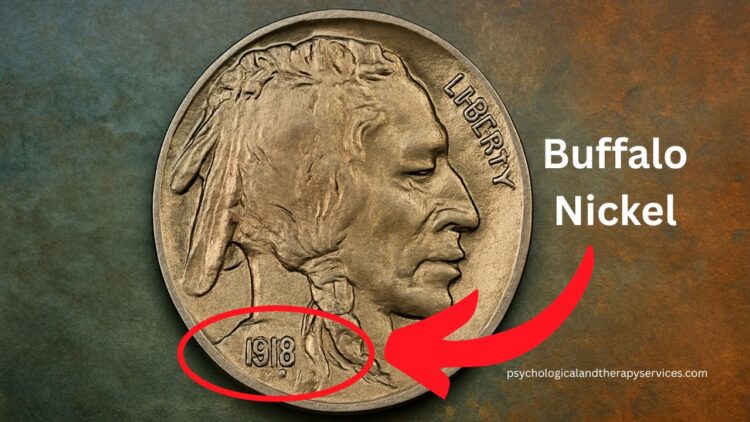Imagine casually handing over a coin to buy pizza, only to learn decades later it was worth $601,000. This incredible true story belongs to a rare Buffalo Nickel from 1918/7‑D, once spent in everyday commerce, now immortalized in numismatic history.
In this article, we’ll unlock the error, value, and unlikely journey of a coin that turned small change into a major windfall.
Historical Context: The Buffalo Nickel Design
- Buffalo Nickels (also known as Indian Head nickels) were minted by the U.S. from 1913 to 1938, made of 75% copper and 25% nickel, weighing 5 grams and measuring 21.21 mm in diameter).
- Designed by sculptor James Earle Fraser, the obverse features a Native American profile, the reverse a bison—symbols of early 20th‑century American spirit.
- While many circulated as pocket change, certain minting errors have elevated select pieces into rare treasure territory.
The Error That Started It All- 1918/7‑D Overdate Nickel
- The standout coin is the 1918/7‑D Buffalo Nickel, which features a rare overdate error—a “7” punched over an original “8” in the date.
- Only a handful of verified examples exist, making this overdate variant exceedingly rare and highly collectible.
- One such coin—used decades earlier to pay for a slice of pizza—sold at auction for a staggering $601,000 .
High‑Value Buffalo Nickel Varieties and Their Auction Prices
| 1918/7‑D Buffalo Nickel | Denver overdate (7/8) | MS66 (Near Mint) | $601,000 | Pizza‑paid coin with overdate detail |
| 1915 Proof Buffalo Nickel | Proof strike, PR69 | PR69 | ~$240,000+ | One of only ~1,050 proof coins |
| 1917‑S Buffalo Nickel | Sharp strike | MS67 | ~$90,000 | Exceptional detail and grade |
| 1916 Double‑Die Nickel | Double‑date error | High grade | ~$105,000 | Rare doubled‑die date variety |
| 1937‑D Three‑Leg Buffalo | Minting deformity | Circulated but clear | ~$50,000–80,000+ | Buffalo appears to have only three leg. |
Why Did That Coin Sell for $601,000?
- Extreme Rarity: Genuine overdate errors like 1918/7‑D are nearly unique.
- Collector Excitement: The story behind a coin once used for pizza adds legend and intrigue.
- Condition Matters: Even a circulated overdate in MS66 condition could command a premium.
- Design Legacy: Fraser’s Buffalo Nickel design has immense historical and aesthetic appeal.
How to Spot Your Potential $601,000 Nickel
Whether you’re a casual finder or a coin enthusiast, here’s what to look for:
- Date and Mint Mark
- Examine the reverse for “FIVE CENTS” and the date below it.
- Look for an overdate, especially a faint or doubled “1918/7‑D.”
- Check for Errors
- Use magnification to inspect the digits—look for overlapping strokes or traces of two numbers.
- Also check for other notable errors like missing bison leg (1937‑D).
- Evaluate Condition
- High-grade examples (sharp feather lines, visible details) are much more valuable.
- Never clean or polish the coin—it may drastically reduce its value.
- Get It Graded
- Send the coin to a reliable grading service like PCGS or NGC for authentication and formal grading.
Coin’s Journey from Pizza to Payday
- Originally spent in everyday circulation—likely forgotten in a drawer or coin jar.
- Decades later, an individual spotted the unusual date and submitted it for evaluation.
- The grading service authenticated its 1918/7‑D overdate error and condition (MS66).
- Subsequently, at auction, the coin fetched $601,000, setting a record for Buffalo Nickel sales.
Why This Tale Resonates
- Real-life miracle: A pizza-purchase coin turning into a six-figure treasure.
- Universal appeal: It blends history, design, and the possibility of hidden value.
- Numismatic wonder: Highlights how minting mistakes and preservation can transform everyday coins into fortune.
This remarkable story proves that treasures sometimes hide in plain sight—like a Buffalo Nickel used to buy pizza that later sold for $601,000. With its 1918/7‑D overdate error, sharp details, and fascinating backstory, it’s a numismatic legend.
If you come across an old Buffalo Nickel, it’s worth inspecting carefully: you might be holding history—or even a fortune—in your hand.
FAQs
Could a Buffalo Nickel used as small change really be worth $601,000?
Yes—if it’s the rare 1918/7‑D overdate in high-grade condition, as authenticated examples prove.
Do other error Buffalo Nickels sell for big money too?
Absolutely. Variants like the 1937‑D three-legged nickel, 1915 proofs, and double‑die dates also fetch large sums
What should I do if I find a potentially rare Buffalo Nickel?
Do not clean it. Take it to a professional coin dealer or submit it to PCGS/NGC for grading before attempting to sell.

